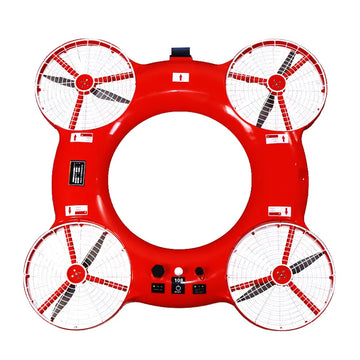When lives are at stake, rescue teams must rely on advanced, reliable equipment to execute missions efficiently. Whether responding to floods, fires, or maritime emergencies, having the right tools can mean the difference between success and tragedy. In this guide, we explore essential rescue equipment, from traditional gear to cutting-edge innovations like the JX-6A Air-Water Dual-Role Rescue Drone System, designed to elevate emergency response capabilities.
1. Core Rescue Equipment for Every Team
Rescue teams require a combination of time-tested tools and modern technology. Here are the basics:
-
Life Jackets & Buoyancy Aids: Critical for water rescues.
-
Throw Bags & Rescue Ropes: For quick deployment to victims in water.
-
First Aid Kits: Compact, waterproof kits for immediate medical assistance.
-
Thermal Imaging Cameras: Locate victims in low-visibility environments.
-
Communication Devices: Waterproof radios for team coordination.
2. Modern Innovations: The JX-6A Rescue Drone System
Traditional equipment often faces limitations in speed, range, and safety. The JX-6A Air-Water Dual-Role Rescue Drone System, developed by Guangzhou Jiaxiao Material Technology, addresses these challenges with groundbreaking features:
Key Advantages
-
Dual-Role Capability: Operates seamlessly in air and water, ideal for floods, oceans, and tourist reservoirs.
-
Rapid Response: Reaches victims in seconds, with a top speed of 13 m/s and remote control range of 1.1 km (water) or 10 km (air).
-
Lightweight & Portable: Weighs under 5 kg, making it easy to transport and deploy.
-
Real-Time Imaging: Equipped with a 720P tilt-able camera for live video feeds during search operations.
-
High Buoyancy: Supports 190N buoyancy, enabling multiple water takeoffs and landings.
Performance Highlights
-
Wind Resistance: Operates in Level 6 winds and Level 2 sea states.
-
Smart Automation: One-button takeoff/return and fail-safe return-to-base if signals are lost.
-
Durability: IP68 waterproof rating and high-strength composite materials for harsh environments.
3. How to Choose the Right Rescue Equipment
When selecting gear, consider these factors:
-
Scenario-Specific Needs: For water rescues, prioritize buoyancy and waterproofing (e.g., JX-6A’s IP68 rating).
-
Portability: Lightweight tools like drones reduce physical strain on rescuers.
-
Integration with Existing Systems: Ensure compatibility with communication devices and control units.
-
Training Requirements: Opt for intuitive designs (e.g., the JX-6A’s “fool-style” operation).
4. Applications of Advanced Rescue Gear
The JX-6A drone excels in diverse scenarios:
-
Flood Rescue: Deploy quickly to stranded victims in rivers or flooded urban areas.
-
Marine Emergencies: Assist coast guards and marine police in open-water operations.
-
Firefighting Support: Evacuate individuals from rooftops or hazardous heights.
-
Remote Areas: Access oil platforms or mountain lakes where traditional boats cannot reach.
5. Conclusion: Equip for Excellence
Rescue teams must balance reliability and innovation to save lives effectively. While traditional tools remain foundational, integrating advanced systems like the JX-6A Rescue Drone enhances speed, safety, and success rates. By prioritizing lightweight design, real-time data, and multi-environment adaptability, modern teams can tackle emergencies with unprecedented precision.
Ready to upgrade your rescue operations? Explore the JX-6A and other cutting-edge solutions at DIDIOK MAKINGS or contact Guangzhou Jiaxiao Material Technology at sales@didiok.org.





